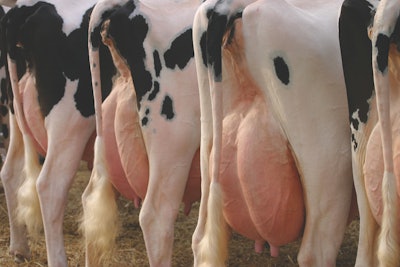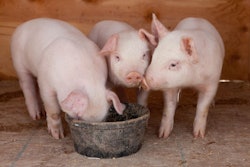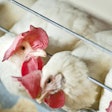
6 macro trends shaping short- and long-term dairy feed production
Total global dairy feed production reached nearly 130 million metric tons in 2019, according to Alltech’s 2020 Global Feed Survey. Despite the COVID-19 pandemic’s influence on dairy production and rations, sources are optimistic total feed volumes will not see significant declines this year, but more likely will remain flat.
Rabobank, for example, forecasts a 1% YOY increase in milk production across the Big 7 dairy regions — the EU, the United States, New Zealand, Australia, Brazil, Argentina and Uruguay — in the second half of 2020.
While COVID-19 dealt a series of blows to the world’s dairy and dairy feed producers, e.g. dramatic decreases in demand to ingredient shortages, once the markets and supply chains stabilized, producers gained new insights into the ways they could strengthen their businesses and better manage their feeding programs.
Feed Strategy magazine’s October 2020 cover story, “Dairy, feed producers adapt in COVID’s aftermath,“ focused on the challenges the dairy industry and feed manufacturers have faced in 2020, its impact on production and its embrace of cautious optimism. However, taking that exploration a step further, several of the article’s sources weighed in on the other macro issues that should be on the radar of U.S. and global dairy and dairy feed producers in the coming months. Here are their thoughts:
1) Industry consolidation
“Over time, the industry has begun consolidating due to several different influences — from market volatility to nuances of owning a family farm. In the last six months, there has been an increase in the speed of consolidation. More and more farms are not necessarily shutting down, but instead transitioning to new ownership.” — Matt Douglas, Zinpro regional business enterprise leader, North America
“Industry consolidation at the processor and producer level will continue as margins remain under pressure. For dairy producers, market access may be a limiting factor to future expansion.” — Paul Krueger, vice president of animal nutrition sales, Milk Specialties Global
2) Global trade
“The U.S. dollar has been weakening recently, which gives us a competitive advantage compared to some of our competitors like the EU, but weakness in the currencies of some of our key export destinations, like Mexico, will still provide headwinds.” — Ben Laine, dairy analyst with Rabo AgriFinance
3) Labor shortages
“Labor has always been a concern around the world when it comes to finding quality help on-farm. A new dimension of management has come into play with dairy owners and/or managers having to manage around illness and ensure a new dynamic of safety measures are in place for employees. With the pandemic limiting travel, infecting employees and slowing processing of key paperwork for migrant workers, quality employees to staff farms has become even harder.” — Matt Douglas, Zinpro regional business enterprise leader, North America
4) Feed security
“Feed security involves several variables, including increasingly extreme environmental impacts, seasonal variation and competition for the global feed base with both the human population and other animal protein producers.” — Matthew Bekker, regional technical manager – Oceania, Novus International
5) Sustainability
“Dairy farmers will need to ensure that they have the correct practices in place where they are maximizing both sustainable farming and production protocols.” — Paul Krueger, vice president of animal nutrition sales, Milk Specialties Global
6) US election
“Depending on who is elected, the U.S. election in November could challenge dairy producers. A change in administration could bring new trade policies, affecting exports of dairy products and grains, whether positively or negatively. Changes in government programs could affect milk prices as well.” — Ben Towns, global business director, Arm & Hammer Animal and Food Production















